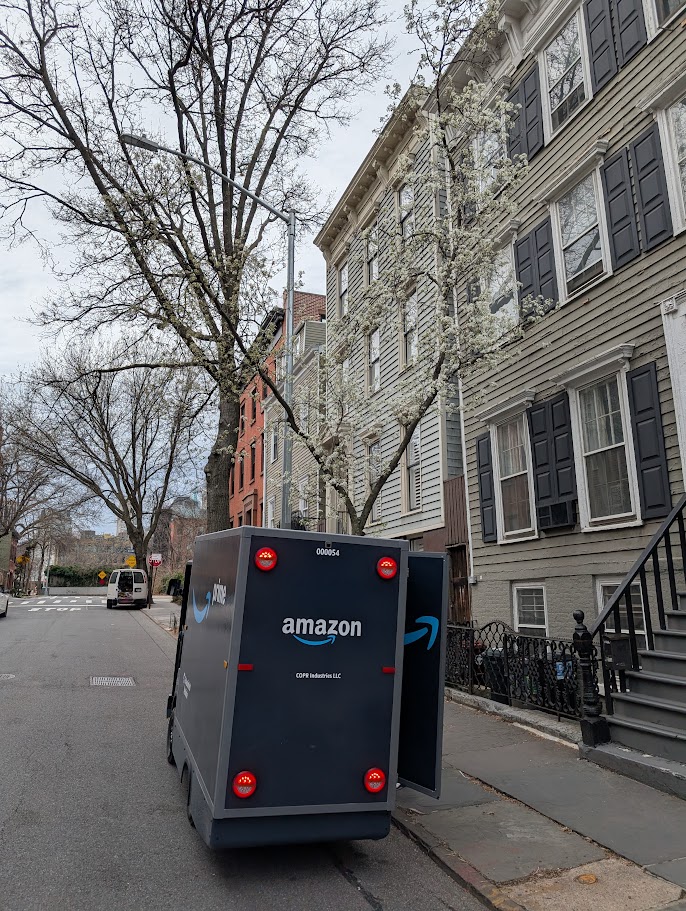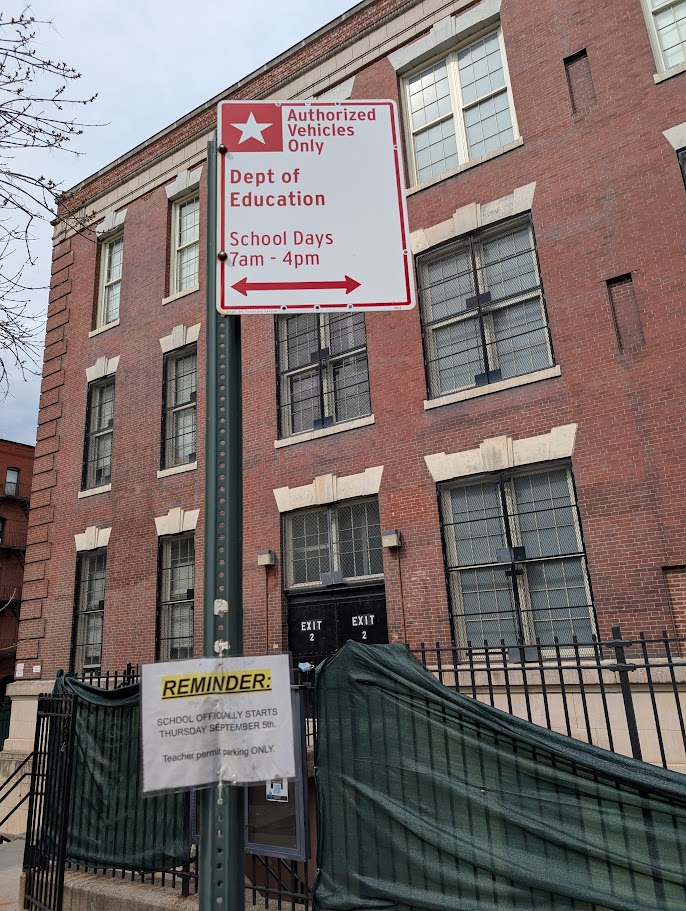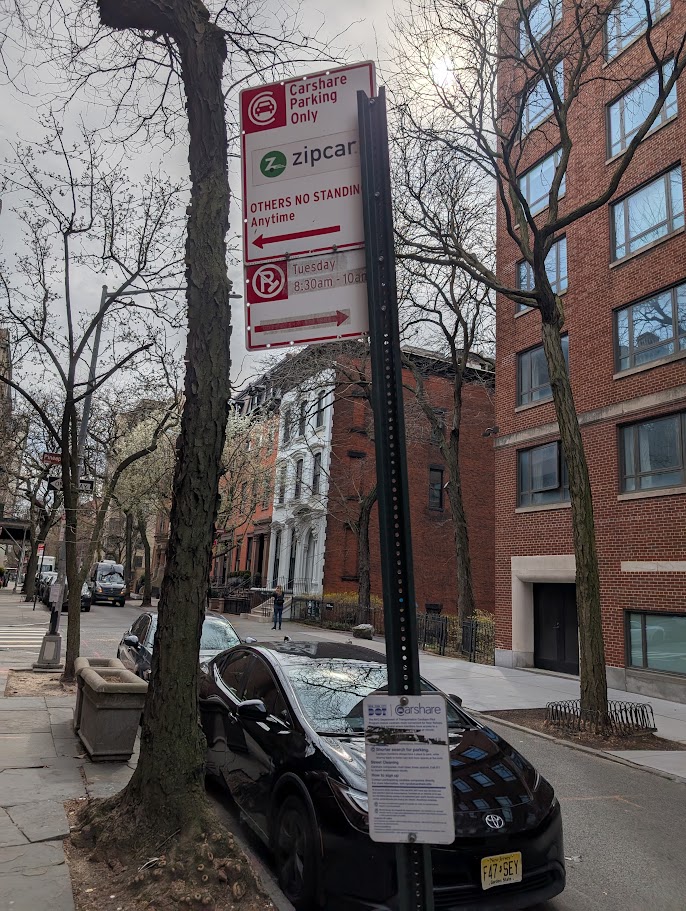Parkicity founder Peter Richards has a long running Twitter (X) history of posting The Curbs of (City He was Visiting). This weekend, while back in New York City, we now get a new edition. I bring you The Curbs of NYC– a reminder of just how expressive—and messy—the curb can be.

In just a few blocks, I saw a mini electric Amazon delivery vehicle parked on a narrow residential street, a hand-painted FDNY curb designation, Zipcar-only signage with laminated policy add-ons, and a Department of Education sign supported by a taped-on reminder about school start dates. Some of these interventions are formal and policy-backed; others are pure improvisation. But together, they reflect the same thing: curb space is valuable, overworked, and always adapting.

New York City is already leaning into this challenge with programs like Smart Curbs, which repurpose underused curb areas for deliveries, pick-ups, EV charging, and more. It’s a step toward aligning curb policy with real-world use—and away from the “first come, first served” parking default that often ignores broader urban needs.

At Parkicity, we believe curbs should be planned with the same care we give to roads and buildings. That means using data, making room for changing demand, and designing with flexibility in mind—not just responding to whoever parks there next. With the influx of curb uses and data available, municipalities can leverage this to design the curbs they want to see.
What I saw in NYC was a curb that tells a story—of adaptation, creativity, and the urgent need for intentional planning. Let’s keep listening to it.
